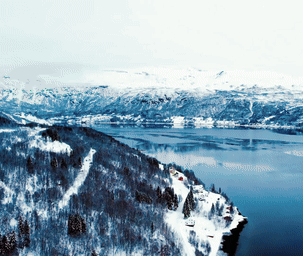Study suggests salmon lice in submerged cages may adapt to live deeper.
New research indicates that salmon lice from submerged cages are producing offspring that prefer to stay deeper in the water column, potentially eroding one of the key advantages of deep-farming technology as a non-chemical lice control.
The work, led by PhD candidate Lowri O’Neill of Deakin University and carried out at the Institute of Marine Research’s (IMR) Matre station in Norway, compared vertical swimming behaviour in lice larvae originating from conventional surface cages and from cages submerged 20–40 metres. The findings are published in Evolutionary Applications under the title “Evidence for the evolution of resistance to non-chemical parasite controls: salmon lice from submerged cages produce larvae that swim deeper.”
Submerged cage systems have been deployed more widely in recent years, particularly in Norway, to keep farmed salmon and rainbow trout away from infectious salmon lice larvae, which typically concentrate in the upper layers of the water column. In these systems, fish are held at depths of 20–60 metres, and access to the surface is managed via snorkels or lifts.
“Initially, the older lice stay on the fish, while the infectious lice larvae float around with the current in the upper water bodies before finding a host,” said IMR researcher and project supervisor Frode Oppedal. “Previous experiments have shown that most lice larvae move up the water column when the pressure increases.”
The new study suggests that this pattern is starting to shift where lice are exposed to submerged conditions.
“The results show that if the submerged fish get lice, and these have offspring, a larger proportion of the offspring will remain at depth compared to lice larvae that hatch on fish in surface facilities,” Oppedal said, summarising the first phase of the work.
The offspring
Adult lice were collected from two submerged commercial sites and from conventional surface farms. Their offspring were reared to the copepodite stage, the infectious larval phase at around 0.4 mm length, during which the animals drift with currents but can actively swim upwards or passively sink. Larvae were then tested in transparent vertical tubes under pressure equivalent to 10 metres depth, to see whether they chose to move up or down the water column.
“From earlier times, before the deep-water drift came, we know that most of them will respond to increased pressure by swimming upwards and staying there,” O’Neill said.
In the new experiments, about 35 percent of copepodite-stage larvae from conventional “surface lice” swam upwards under increased pressure, whereas only 23 percent of larvae whose parents came from submerged cages did so. Conversely, 19 percent of larvae from surface lice sank, compared with 27 percent of larvae from submerged-cage lice.
This shift in behaviour suggests that larvae originating from deep-farmed fish have a higher tendency to remain at depth, where submerged cages are located.
Too early for firm operational conclusions
Researchers caution that it is still too early to say exactly what the findings will mean for deep-farming strategies, but the study provides the first evidence that lice larval behaviour is influenced by the depth environment of the parental generation.
“The results give us an indication that the adaptation may be hereditary. We will look into this further in the next experiment,” Oppedal said.
If a genetic or heritable component is confirmed, submerged cages could, over time, select for lice populations better adapted to deeper waters, potentially reducing the long-term effectiveness of depth-based lice avoidance.
In parallel, local hydrographic conditions may already be bringing larvae down to submerged cages in some locations. IMR notes that declining currents, overturning of water masses and storm-driven turbulence can transport infectious larvae deeper than their typical preferred depth, increasing the likelihood of contact with fish held below the surface.
Implications for non-chemical lice control strategies
The results come as salmon farmers and regulators push to reduce reliance on medicinal lice treatments and to expand non-chemical measures, including deep cages, snorkel cages, skirts, fallowing strategies and coordinated area management. Industry and research groups have increasingly warned that parasites can evolve resistance not only to pharmaceuticals but also to operational and environmental controls.
The authors of the study argue that evolutionary responses need to be considered in technology planning and area-based regulation, particularly where multiple non-chemical tools are combined in a production zone.
“If this turns out to be the case, it will be important to take this into account, for example when combining different technologies on fish farms in an area,” Oppedal said. “Then the long-term negative consequences overall may be the least possible.”
Further work planned under O’Neill’s PhD will investigate whether the observed behavioural differences are indeed hereditary and how rapidly such traits might spread under commercial farming conditions.


